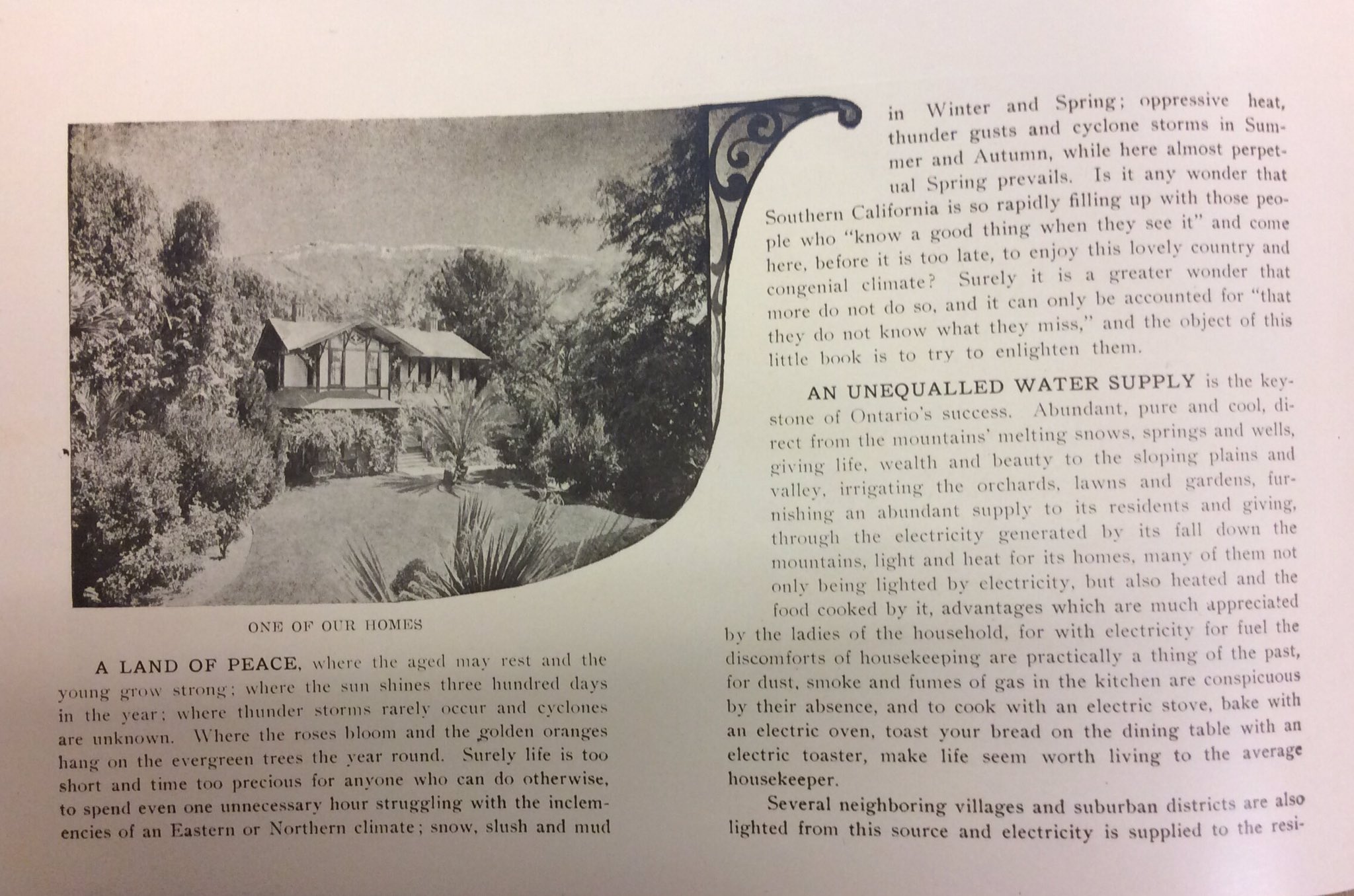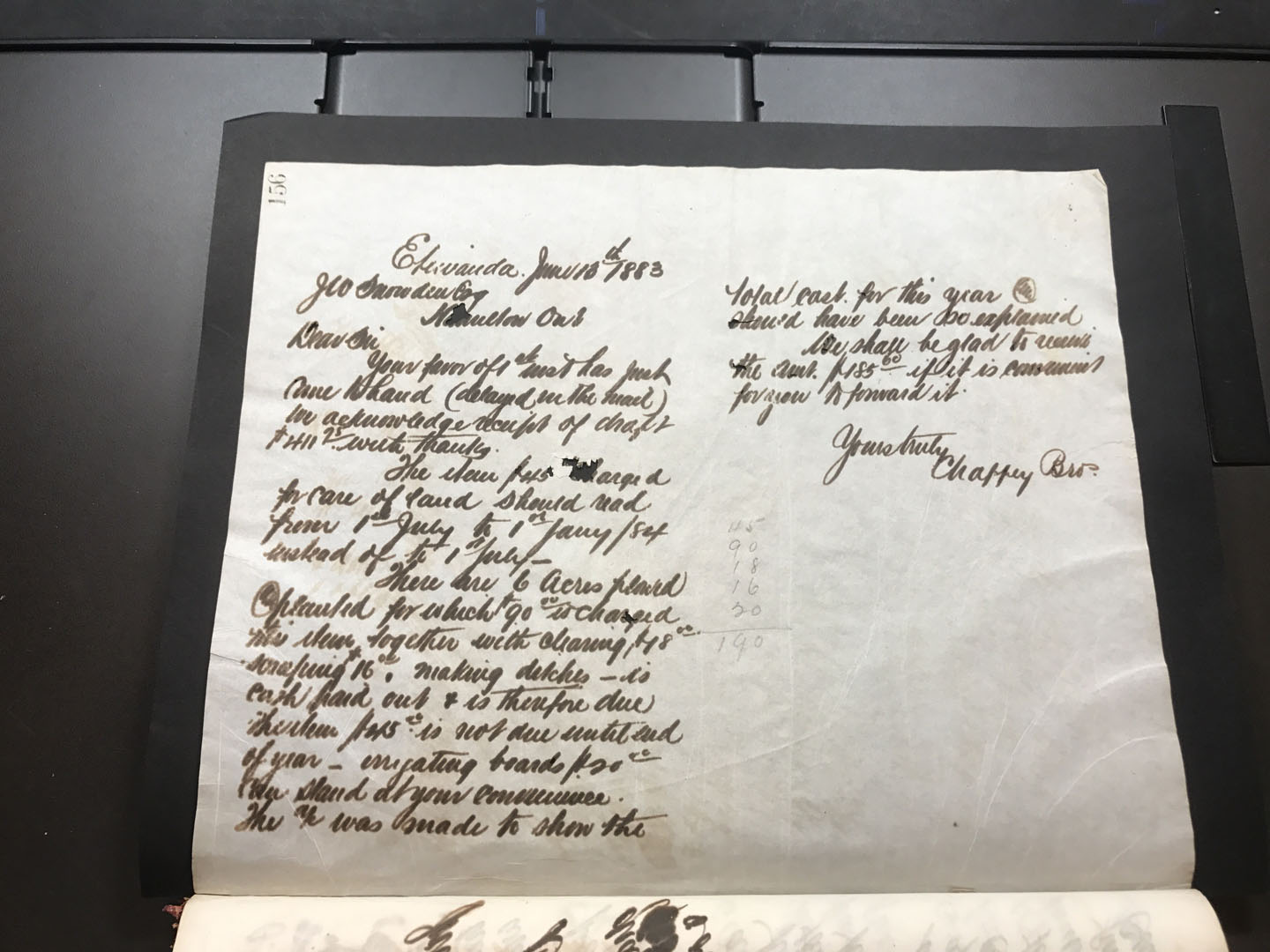Hello,
For the last few blog entries I have been working on the Chaffey Letters, a book comprised of letters written by two brothers who I mentioned in my last blog, William and George Chaffey. If you’re from the Inland Empire you might know of the Chaffey Brothers, but I’m sure for many, including a SoCal student such as myself, you might be asking, Chaffey? Chaffey who? You might not know the Chaffey Brothers let alone their life’s work.
I found, after a bit of research, that the Canadian born brothers are known to have developed the cities we today know as Ontario, Upland and Etiwanda (among many). I must admit that it blew. my. mind. finding out that the letters I have been reading and scanning were written by two men known not only for developing these cities, but two brothers known as making Los Angeles the first “all-electricity-lit-city” as well as introducing irrigation and thus agriculture production (specifically, fruit-farming) to the Southern California desert aka the modern day Inland Empire. Understanding California as the number one agricultural producing state in the United States and that the entire state remains almost completely dependent on irrigation, it is profound to know that the Chaffey Brothers introduced irrigation to such a large area of Southern California. According to a website called Inside the Inland Empire, a website in part dedicated to the history of the Inland Empire, the Chaffey brothers are described as having started the Inland Empire Land Boom.


(George Chaffey) (William Chaffey)
(photos from: http://www.ontarioheritage.org/history-of-ontario.html)
Purchasing the land in 1881, the Chaffey Brothers would, in a span of just four years, create the Etiwanda Water Company, the San Antonio Water Company, open Chaffey Jr. High and make an estimated 1 million dollars (both would die very, very wealthy). Today, the Chaffey Brothers have both a high school (Chaffey High School) and a community college (Chaffey College) named after them, as well as many cities both named by them and functioning in present day because of them.
Originally, before it was the Inland empire, much of the land was in the hands of a Captain by the name of Joseph Garcia. Before Captain Garcia and before European and Spanish colonization, the land belonged to American Indians Tongva, Serrano, and Cahuillia.
Since then, the Inland Empire became the major center of agriculture production in the late 1800s and early 1900s and then, as can be seen today, into a large residential, industrial and commercial area with an estimated 4 million people populating the area.
The more you know!
till next time,
Alfonso.












